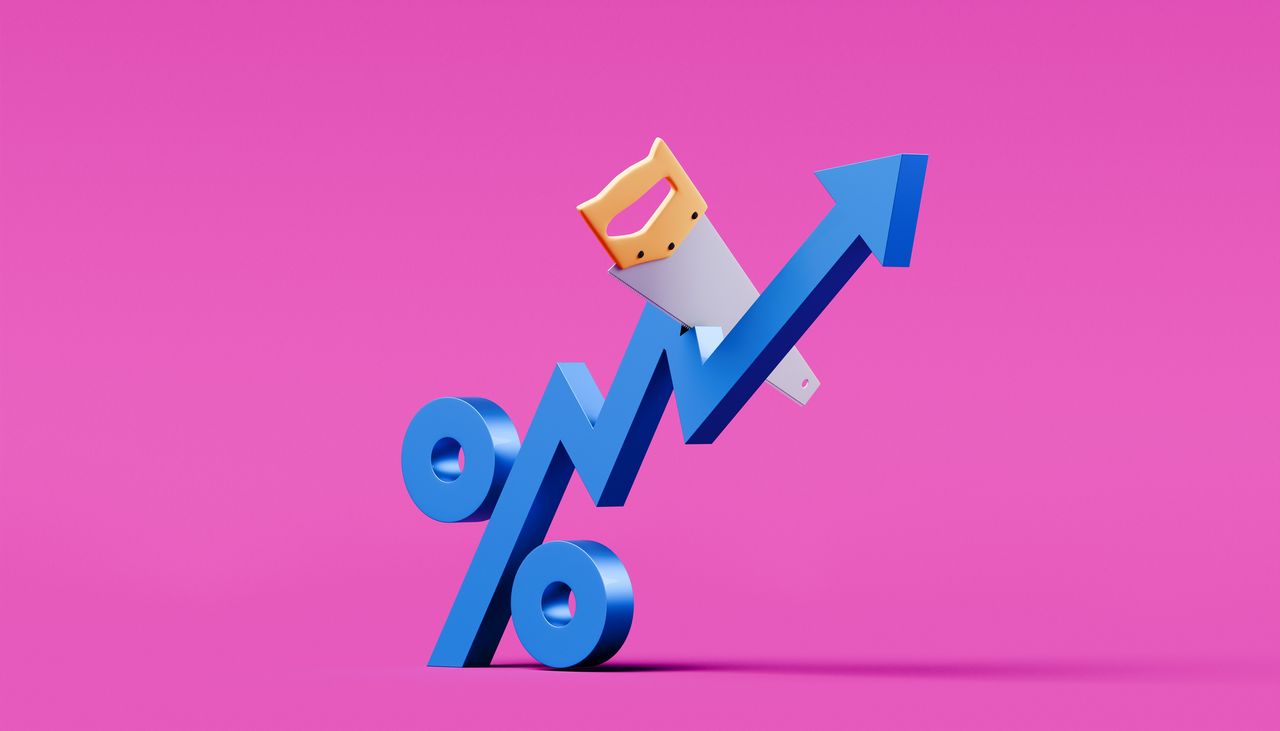
Speculation about how big the Fed rate cut will be this fall has seen renewed vigor following the release of the July jobs report, which came in much weaker than expected.
Outsize cuts to the previous two months' worth of jobs data and a rising unemployment rate underscore a weakening in the labor market — and quickly raised expectations for the Fed to resume cutting interest rates sooner rather than later.
Heading into the August 1 release of the monthly jobs report, the odds of a September rate cut were low — falling sharply after the July Fed meeting.
The Federal Open Market Committee (FOMC) chose to keep rates unchanged for a fifth-straight meeting in July. In its policy statement, the central bank's rate-setting committee stated that "the unemployment rate remains low, and labor market conditions remain solid."
The main concern for the Fed was the other side of its dual mandate: a "somewhat elevated" level of inflation, and uncertainty around how President Donald Trump's tariff policies would impact the rate of price growth.
The committee concluded that keeping the federal funds rate at its current range of 4.25% to 4.5% was appropriate to "guard against inflation risks, as Federal Reserve Chair Jerome Powell stated in his July 30 press conference.
However, Powell noted that "there's also a downside risk to the labor market." Specifically, the Fed chair pointed to "a slowing in job creation," as well as "a slowing in the supply of workers."
Powell also said the central bank had "made no decisions about September," and that it needs to see the totality of two months' worth of inflation and employment data before it can make any decision on monetary policy. This sent rate-cut odds plummeting.
On July 31, the day after the July Fed meeting, the chance for a September rate cut stood at 38% — down from 73% the previous week.
How large will the next Fed rate cut be?
At last check, though, CME FedWatch was indicating 85% odds the Federal Reserve will cut rates by a quarter-percentage point (0.25%) at its September 16-17 gathering.
This sharp spike came courtesy of a dismal update on the labor market the morning of August 1. Specifically, the Bureau of Labor Statistics said the U.S. added 73,000 jobs in July, missing economists' estimate for 100,000 new jobs. Figures for May and June were downwardly revised by a collective 258,000.
The unemployment rate also ticked higher to 4.2% from 4.1% in June.
"The downward revisions were the most revealing in this month's job report," says Jeffrey Roach, chief economist for LPL Financial. "As noted earlier, business demand for labor is slowing, adding uncertainty to the growth trajectory for the latter half of this year."
Roach says that given this weakness in the labor market, "investors will recalibrate rate expectations. This solidifies our view that the Fed could cut rates in September."
In addition to a September rate cut, futures traders are now pricing in a 60% chance the Fed will cut by an additional quarter-percentage point in October.
A combined half-point reduction in interest rates this fall would bring the federal funds rate to a range of 3.75% to 4.00%.
CME FedWatch is also showing majority odds for a quarter-point rate cut at the FOMC's December 9-10 meeting (technically, still fall), which would bring the fed funds rate to a range of 3.00 to 3.25% – its lowest level since September 2022.
All this is subject to change — especially when there are several more economic reports due between now and the next Fed meeting.
Why should investors care about interest rates?
The path of interest rates has real-life implications for people — impacting everything from the amount you pay on a car loan to the rate you're charged on your credit card to your retirement planning.
Interest rates have an impact on investors, too. Lower rates tend to boost bond prices — and push bond yields down.
Rate cuts are generally considered good for the stock market.
"Lower interest rates: Stimulate economic growth, which boosts corporate earnings; reduce borrowing costs, which improves profit margins; and make stocks more attractive relative to fixed-income alternatives," writes Kiplinger contributor Charles Lewis Sizemore, CFA, in his feature "How to Invest for a Fall Interest Rate Cut by the Fed."
Tech stocks and small-cap stocks often benefit the most from low interest rates, considering these companies are more reliant on future earnings expectations and can borrow money more cost-effectively when rates fall.
Tactical investors looking for broader exposure should take a closer look at these exchange-traded funds (ETFS) that could benefit from rate cuts later this year.







